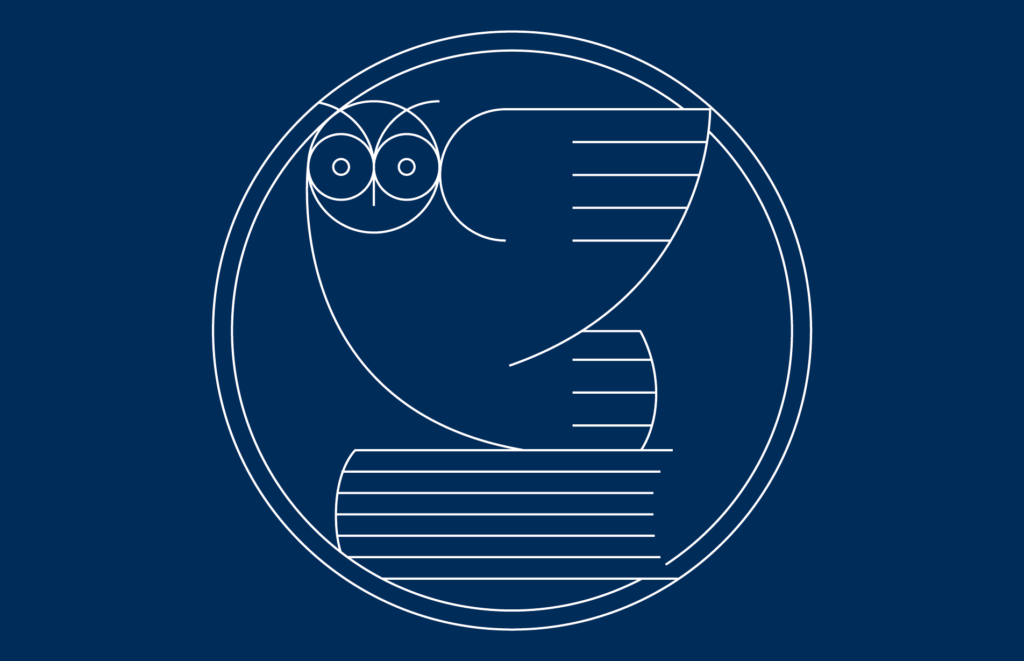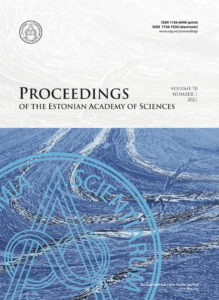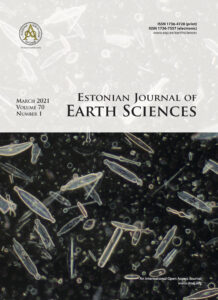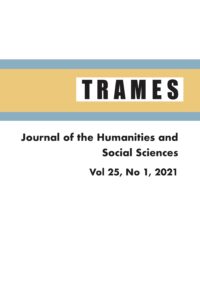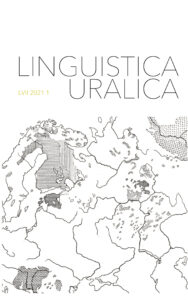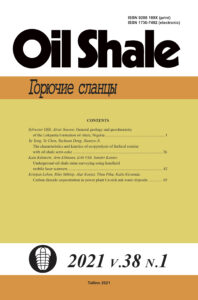Proceedings of the Estonian Academy of Sciences
Proceedings of the Estonian Academy of Sciences celebrates volume 70
The first volume of the Proceedings of the Estonian Academy of Sciences was published in 1952. The current Journal emerged in 2008 through merger of separate series of the Academy Proceedings, several of which were initially founded in 1952.
Today the Proceedings is abstracted/indexed in the most important databases, including Web of Science and Scopus, and listed in DOAJ. All published papers have immediate open-access according to the international license CC BY-NC, and the electronic versions of all publications are available online much earlier than their publication in the print version of the Journal.
Ten articles in Vol. 70, Issue 1 represent the following subjects: Bacteriology, Chemistry, Control Theory, Decontamination Sensing, Mathematical Physics, Mechatronics and Electrical Engineering, Network Communications, and Recycling.
In Editorial Jaak Järv and Jüri Engelbrecht give a short overview of the past and the present of the Journal. They emphasize that over the past decades, this Proceedings has gained an international reputation thanks to the support of the scientific community, dedication of editors, and skills of the technical staff of the Estonian Academy Publishers. https://doi.org/10.3176/proc.2021.1.05
The review article by Jüri Engelbrecht et al. is concerned with the contemporary state of modelling nerve pulse propagation, demonstrating how the knowledge from continuum mechanics can be applied to building consistent mathematical models for this fascinating phenomenon. https://doi.org/10.3176/proc.2021.1.02
Anton Rassõlkin et al. have presented implementation of Digital Twins for electrical energy conversion systems in selected case studies. https://doi.org/10.3176/proc.2021.1.03
Nguyen Thanh Tung et al. have discovered chemical constituents and biological activities of Balanophora fungosa varietas globosa growing in Vietnam, as well as comparative chromatography with some species of the genus Balanophora J. R. & G. Forst. https://doi.org/10.3176/proc.2021.1.01
Ott Rebane et al. have been devoted in their study to the development of a UV fluorimetry sensor capable of realtime monitoring of the decontamination process of microbiological pathogens by hydrogen peroxide vapour (HPV) treatment. https://doi.org/10.3176/proc.2021.1.06
Tanel Mullari and Ülle Kotta present in their paper necessary and sufficient linearizability conditions by state transformation for discrete-time multi-input nonlinear control system under the mild assumption on the surjectivity property and describes how to find the state transformation when it exists. https://doi.org/10.3176/proc.2021.1.09
Abrar Hussain et al. analyse in their review article commercial postconsumer textile materials, their recycling and applications. https://doi.org/10.3176/proc.2021.1.07
Qiong Wu focused in his study on the authentication mechanism of communication nodes in the Internet of Vehicles (IoV). https://doi.org/10.3176/proc.2021.1.04
Saleh H. Salmen et al. study in their article how to isolate filter passing bacteria from surfaces located in various dental departments at the College of Dentistry, King Saud University Hospital. https://doi.org/10.3176/proc.2021.1.08
Fu Xingjian and Pang Xinrui investigate the robust H∞ faulttolerant controller design under actuator failure for a class of the stochastic Markov jump timedelay systems with parameter uncertainties. https://doi.org/10.3176/proc.2021.1.10
Estonian Journal of Earth Sciences
The Estonian Journal of Earth Sciences publishes the 70th volume this year
It all started under different name and scope – the first volume of a parent journal Proceedings of the Academy of Sciences of the Estonian SSR included just one geology-related article. It is noteworthy, however, that this article focused on thermal analysis of minerals, which continues to be relevant and useful method today – for instance, to understand the heterogeneity of Estonian shelly phosphorite deposits. The same is indeed true for many other papers published in the journal since 1952, which are being cited decades after their publication. In the first issue of the anniversary volume the history of the journal is briefly outlined. The four regular research papers focus on bedrock geochemistry, paleontology, and stratigraphy of the Baltic region:
Per Ahlberg and co-authors studied Cambrian trilobites and carbon isotopes in a drill core from Öland, Sweden. This provided a unique opportunity to calibrate chemostratigraphic data with biozones and make conclusions about age-relationships of regional and global events. https://doi.org/10.3176/earth.2021.03
Rutt Hints and co-authors present their results on Ordovician black shales of NE Estonia, which host high concentrations of rare metals such as U, Mo and V. The metal enrichment occurred during and after deposition in semi-open geochemical system and was controlled by the properties of the primary organic-rich mud. https://doi.org/10.3176/earth.2021.04
Ervīns Lukševičs writes about Devonian armored fish from Latvia, and reconstruct deep time evolutionary lineages, paleoecosystems and environments. New lines of evidence indicate close biogeographic links between the Baltic Devonian basin and Rheinisches Schiefergebirge in Germany. https://doi.org/10.3176/earth.2021.01
Karin Truuver, Tõnu Meidla and Oive Tinn analyze the dynamics of end-Ordovician ostracod faunas across Baltoscandia and show that the mass extinction started earlier than commonly thought. A specific cold-water ostracod association appears to be coincident with the global Hirnantia Fauna and peak carbon isotope shift. https://doi.org/10.3176/earth.2021.02
TRAMES. Journal of the Humanities and Social Sciences
The first issue of Trames 2021 opens with an article by David Ramiro Troitiño and Tanel Kerikmäe (TalTech) about the relations between Catalonia, the European Union and Spain, focusing on European nationalism, integration and disintegration. https://doi.org/10.3176/tr.2021.1.01
This is followed by an article by Merle Taimalu et al (University of Tartu and the University of Eastern Finland) about the reasons why people choose the profession of a teacher. The authors compare the motivation factors of Estonian and Finnish students' career choices. The Finnish students valued more the satisfaction, status and salary related to a teacher's job, whereas the Estonian students mentioned competence and the difficulty of the profession. https://doi.org/10.3176/tr.2021.1.02
Hadeel Ghaleb Abbas examines the influence of Mesopotamian civilisations on the religions of Arabs before Islam (Iraq). https://doi.org/10.3176/tr.2021.1.03
Ebrahim Mohammed Alwuraafi examines the persecution and yearning of Yemenite Jews on the basis of Ali Al-Muqri's novel "The Handsome Jew" (2009) (Saudi Arabia). https://doi.org/10.3176/tr.2021.1.04
C. G. Chidume et al. investigate the role of blacksmiths in the wars in pre-colonial Africa (Nigeria and Great Britain). https://doi.org/10.3176/tr.2021.1.05
The artickle by Emmanuel C. Anizoba and Anthony Onyedika tackles traditional systems of worship among Igbo people of Nigeria. The authors think it sensible to integrate the elements of Igbo pagan worship of God with Christian ways of worship. https://doi.org/10.3176/tr.2021.1.06
The current issue of Trames finishes with the article by professor Gao Jingyi at Beijing International Studies University. He compares the two schools of research of Chinese historical phonology and examines the possibilities of overcoming the split between them. The authors in Chinese school of linguistics rely on the two thousand year history of Chinese linguistics. The school of descriptivists uses the results of the previous school, but applies the methods of Western linguistics in their research of the Chinese language. The problem is that these two schools do not communicate with each other. Gao is an Estophile who mastered the Estonian language and acquired his PhD at the University of Tartu. https://doi.org/10.3176/tr.2021.1.07
Linguistica Uralica
The March 2020 issue of Linguistica Uralica features an article by the young Moscow-based linguist Nikita Murav’ev who investigates simultaneity constructions in Kazym Khanty, in particular the differences in meaning and function between two non-finite constructions. As he shows the two constructions do not only serve to distinguish punctual simultaneity (x occurred when y occurred) from interval simultaneity (x occured while y occured), but also evidential notions: only one of these constructions is preferred in evidential, modal and other subjective contexts where the presence of the main event is subject to the speaker’s inference, hearsay, conjecture or imagination. https://doi.org/10.3176/lu.2021.1.04
Oil Shale 2021
In the new issue, we find an interesting article „Carbon dioxide sequestration in power plant Ca-rich ash waste deposits“ as a joint work of researchers of TalTech and University of Tartu. The article by Kristjan Lebeni et al. focuses on the CO2 sequestration capacity of shale ash. In order to achieve future goals of carbon neutrality and climate, different options for CO2 capture are being explored. Industrial wastes rich in chemically active alkali metal oxides are considered as potential CO2 sequestration materials. Such material is also oil shale ash. The authors show that the CO2 sequestration rate of power plant ash residues is currently 51 kg CO2 per tonne of hydrated oil shale ash, but the CO2 sequestration potential is up to 200 kg. https://doi.org/10.3176/oil.2021.1.04
Artu Ellmann et al.analyse how a mobile scanning tool can be used to measure an oil shale mine. https://doi.org/10.3176/oil.2021.1.03
Sylvester Ofili and Alvar Soesoo investigate Nigerian oil shale and the kinetics of pyrolysis of different oil shale materials. https://doi.org/10.3176/oil.2021.1.01
